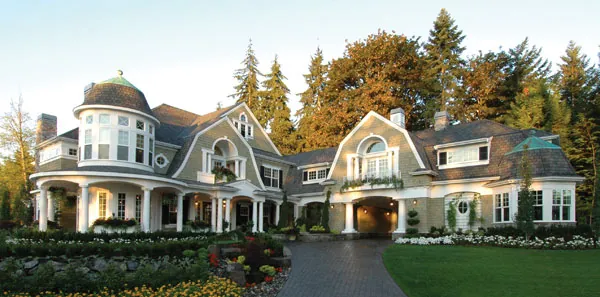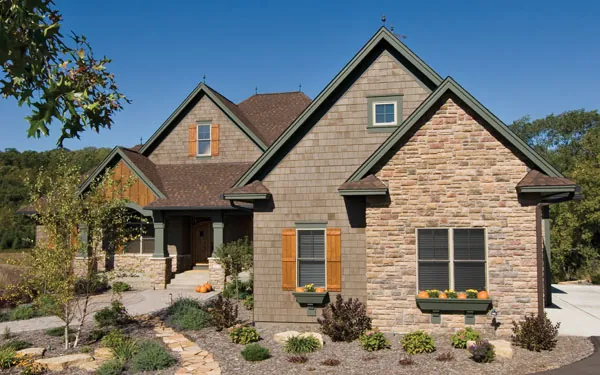 by Jennifer Jones
by Jennifer Jones
If you lack time, money and energy to support a large garden but want to give your home a new look, window boxes are just what you need. Window boxes are also the easiest way to add curb appeal to your home. Keep these key guidelines in mind when choosing and planting window boxes.

View This House Plan
View Other Luxury House Plans
Before you purchase any of the flowers or containers, decide what effect you are going for. Are you trying to blend the window box with the rest of your home or create a contrast? Maybe you want to incorporate the same flowers in the boxes as in your garden? These are all questions to consider beforehand.

Once you have decided what look you are trying to evoke, it is time to decide what kind of box to use. You want to select a box that will require the least amount of maintenance and the most durability. The most common window box used is made out of vinyl and is both low maintenance and very durable. Wooden window boxes have their perks as well. You can paint them any color to match your home or make a bold statement against your home. If you are in a sunny location, avoid metal boxes because metal conducts heat rapidly and the plant roots will overheat. Pay attention to the size of your window box. It should be a few inches longer or shorter than your window. The average box size is between 8-10 inches wide and a minimum of 6 inches deep. Keep in mind the deeper the box, the healthier the root growth will be.

View This House Plan
View Country French House Plans
Now it is time to plant in your window box. There are a few options as to how to plant in your window box. You can plant directly into the container, put potted plants in the boxes and fill around them, or put plants in a plastic liner that fits in the box. It does not matter which option you chose; it is all personal preference and how much effort you want to spend on the plants. Time to select plants now. Generally a window box is made up of a mixture of trailers, upright plants, filler plants and bulbs. The compatibility of the plants is important as well. You want to choose plants that have similar light and moisture.
Shade loving trailers include: peppermint, fuchsia or variegated English. Some common shade loving uprights are: pansy, snapdragon, coleus, fern or English daisy. For your shady fillers use sweet autumn clematis or trumpet vine.

View This House Plan
View Other Country French House Plans
If you have a home in the sun choose these sun loving trailers: thyme, petunia, prostrate rosemary or sweet potato vine. Sunny uprights consist of: lavender, marigold, salvia, periwinkle or opal and bush basil. Lastly, add these sun loving fillers: golden hop, moon vine, honeysuckle or jasmine.
A mixture of these plants in the same window box will surely suggest the look you are going for. Do not use regular garden soil because it will pack too densely and suffocate the plant roots. You should instead use a balanced planting mix of compost, sand and topsoil. Make sure to have drain holes, and prevent soil from washing out the bottom by lining it with a screen.
Window boxes are easier to maintain than a large garden, but they still require consistent care. Be sure to take care of them, and they will do wonders for your home in return.
Here are some related articles:
Save this article to:
back to top